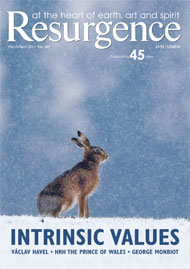Burma has been much in the news since the release of Aung San Suu Kyi from house arrest late last year. Just a month before, there was euphoria of a different kind when a group of primatologists discovered a new species of snub-nosed monkey in the north-eastern region of the country. There had been no previous reports of any snub-nosed monkeys in Burma, so it was a great surprise to find them there.
An international team of scientists interviewed local hunters, who described a monkey with prominent lips and wide, upturned nostrils. This description did not fit any primate known in the area. Sadly, the first specimen that came to light had been killed by the hunters. It was immediately clear that this was a species of monkey not known to scientists, although it is very familiar to local people, who call it mey nwoah, meaning ‘monkey with an upturned face’.
Later, field researchers were lucky enough to find some live snub-nosed monkeys, but the creatures escaped before they could be studied further. The new species is distinguished by its upturned nose, which apparently collects rain and causes it to sneeze. Hunters say that the monkeys spend wet days with their heads tucked between their knees. The new species also has a wispy white beard and ear tufts as well as a relatively long tail, according to the UK-based conservation charity Fauna & Flora International, whose scientists were instrumental in the discovery.
The excitement of the discovery is tinged with great concern, however, as Chinese companies are building logging roads into the area, encroaching on the monkeys’ habitat. Logging also has wider implications for the monkeys, as a proliferation of logging camps means an increased demand for bush meat.
Based on talks with the hunters, scientists estimate that only about 300 of these monkeys remain – few enough to qualify them for ‘critically endangered’ status on the International Union for Conservation of Nature’s Red List of Threatened Species. Obviously, more field research needs to be carried out to clarify the situation. However, if the new species were put on the Red List, the area and the monkeys would become a conservation priority, and hopefully attention would then be focused on the destruction caused there by logging.







